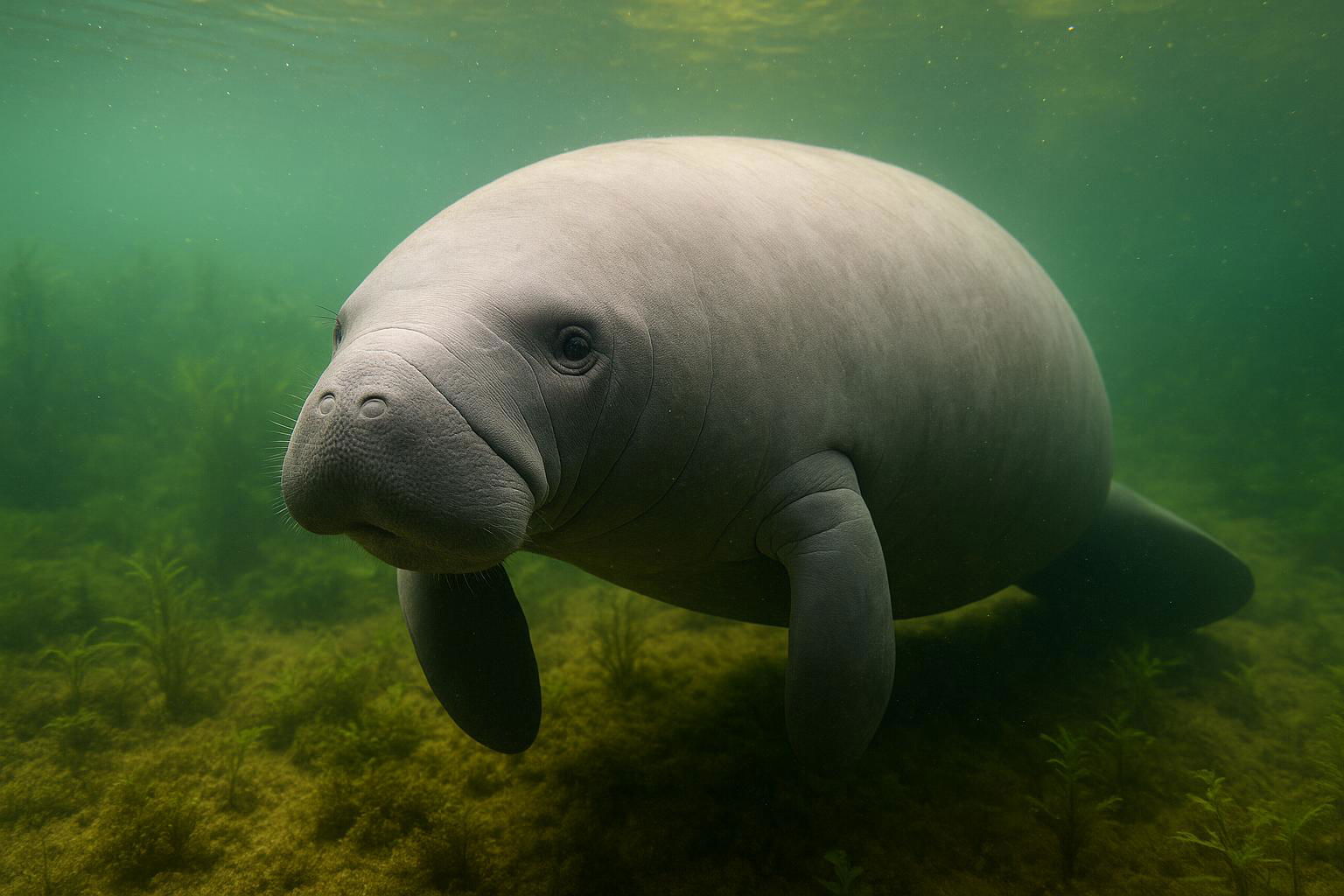
Amazonian Manatee
Trichechus inunguis
The Amazonian Manatee (Trichechus inunguis) is a distinctive aquatic mammal native to the freshwater ecosystems of the Amazon Basin. Recognizable by its streamlined, robust body and paddle-shaped flippers, this species is the smallest in the manatee family, measuring between 2.8 and 3.0 meters in length and weighing up to 450 kilograms. Unlike its marine relatives, the Amazonian manatee lacks nails on its flippers, an adaptation that suits its freshwater habitat. The skin is predominantly gray, often mottled with pinkish patches, and provides excellent camouflage in the murky river waters.
This gentle herbivore primarily feeds on a variety of aquatic vegetation, playing a crucial role in maintaining aquatic ecosystems by promoting healthy plant growth and distribution. Known for their solitary or small group social structure, Amazonian manatees are elusive, slow-moving creatures that surface for air every few minutes. Despite their low predation risk, their populations are vulnerable due to habitat destruction, accidental capture in fishing nets, and hunting, leading to their classification as a vulnerable species. Conservation efforts focus on habitat protection and increased awareness to ensure the survival of this unique species.

 All Species & Breeds
All Species & Breeds
 Highland Cattle
Highland Cattle
 Miniature Donkeys
Miniature Donkeys
 All Species Directory
All Species Directory
 Highland Cattle in Virginia
Highland Cattle in Virginia
 Miniature Donkeys in Texas
Miniature Donkeys in Texas












